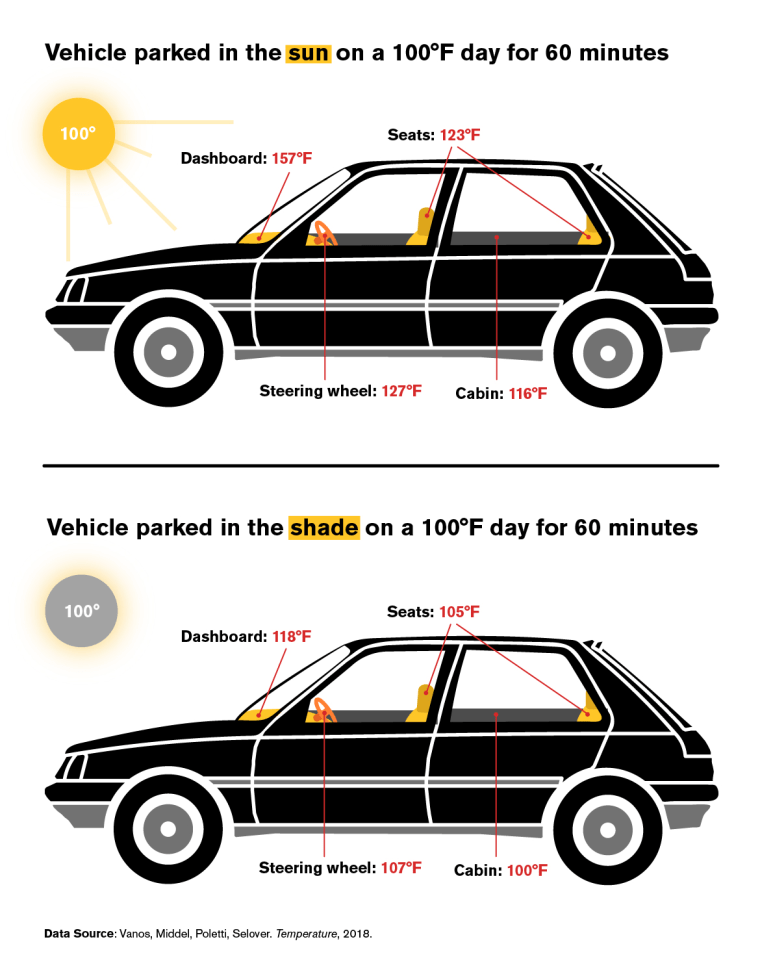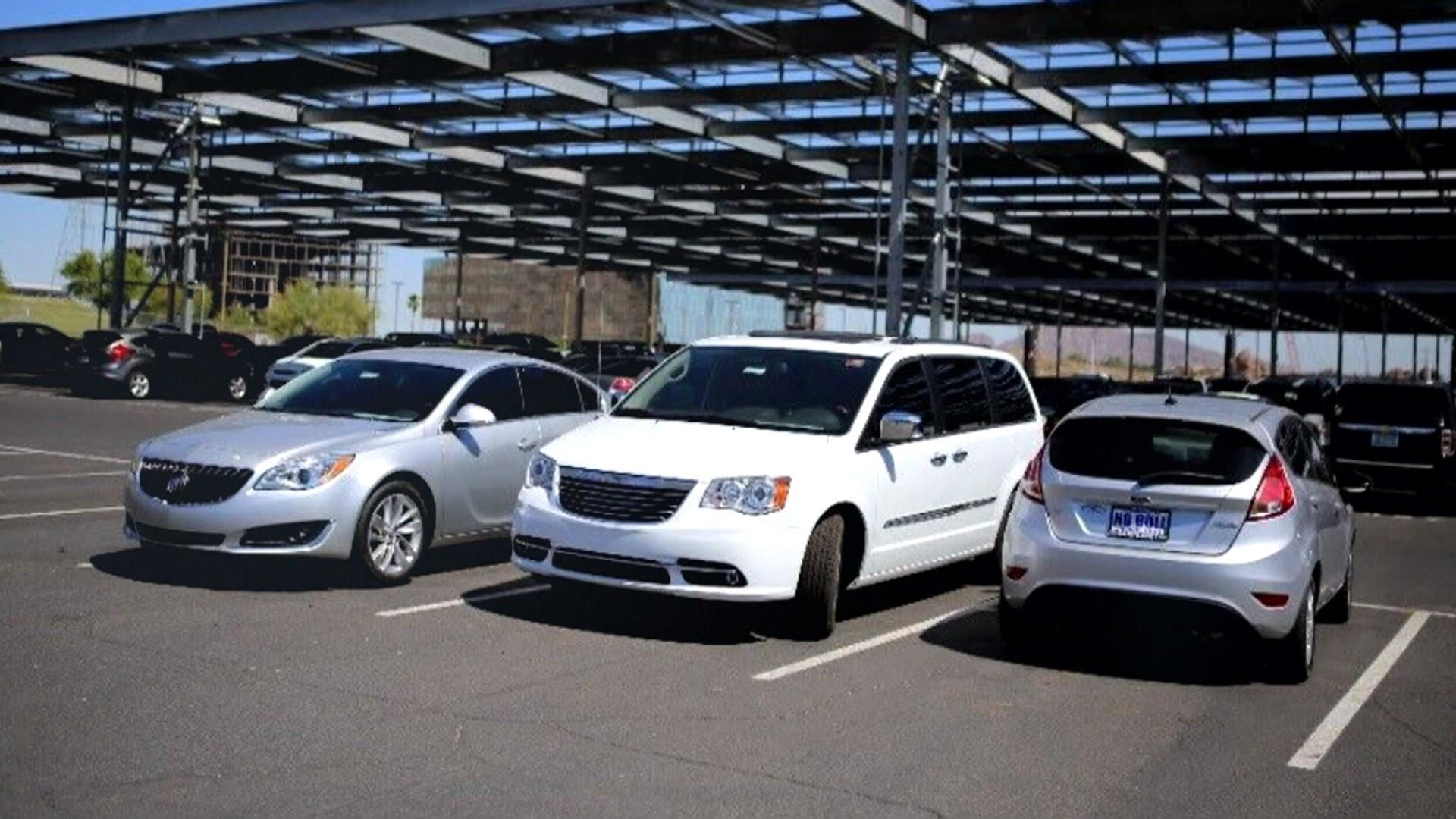From Safe Haven to Death Trap in an Hour
by Maggie Fox
Cars can heat up to killer temperatures in just an hour in summer, a new study finds.
Getty Images
Getty Images
It was one of those more-than-hectic days. Erin Holley and her husband were building a new house and dealing with a newborn along with their 4-year-old daughter. “The baby and the move came all at the same time,” said Holley, who lives in Charleston, S.C.
“Last summer is a blur of storage units and moving into the new house and nursing the baby.” He didn’t sleep well. “I was exhausted and delirious,” she said. A family trip to the park sounded like just the break they needed.
"I screamed, ‘Oh my god, where is the baby?’”
"I screamed, ‘Oh my god, where is the baby?’”
“We were moving things from one storage unit to the next. At some point we both thought we had moved the baby to the first car,” Holley remembered. Two kids — two car seats. One facing forward, one facing back, with a high back that protects the infant in a crash, but makes him invisible to anyone in the front.

Vanos, Middel, Poletti, Selover / Arizona State University
It isn’t long on a hot summer day.
The team tested six cars, including two sedans, two economy cars and two minivans. Left in the sun on a 100-degree day in Arizona, it took just an hour for the interior temperature to hit 116 degrees. Dashboards heated up to a stinging 157 degrees and seats hit 123 degrees in that time. The shade wasn’t much better. Interior temperatures reached 100 degrees after one hour and seats were 105 degrees. “These tests replicated what might happen during a shopping trip,” said Nancy Selover, an Arizona State University climatologist and research professor.
“We wanted to know what the interior of each vehicle would be like after one hour, about the amount of time it would take to get groceries. I knew the temperatures would be hot, but I was surprised by the surface temperatures.”
MEMORY FAILURES HAPPEN TO EVERYONE
Often, parents whose children die after being left in cars are charged with manslaughter or prosecuted for neglect. But Gene Brewer, an ASU associate professor of psychology who studies memory, says it’s very easy to become distracted. “Memory failures are remarkably powerful, and they happen to everyone,” he said. “There is no difference between gender, class, personality, race or other traits. Functionally, there isn’t much of a difference between forgetting your keys and forgetting your child in the car.”Related
Holley said.
“You can’t buy a car today that doesn’t automatically turn off your headlights or remind you to turn off your headlights. Who decided it’s more important to not have a dead car battery than have a dead baby?” Fennell asked.
In the meantime, her site offers ways to help lower the odds that a child will be forgotten in the back seat of a car.
"Who decided it’s more important to not have a dead car battery than have a dead baby?”
"Who decided it’s more important to not have a dead car battery than have a dead baby?”
Fennell’s website, KidsAndCars.org, shares stories of children who have died in hot cars and has a page devoted to advice on how to prevent such a tragedy. Her group has helped lobby for legislation requiring back-up cameras and interior trunk releases in cars.
LOWER ODDS OF A FORGOTTEN CHILD
Now the organization is pressing for federal legislation requiring car seat alerts in all new vehicles, so that babies are never left behind by mistake. Two similar bills are being wrapped into driverless car legislation in the House and Senate.Related
• Get in the habit of always opening the back door to check the back seat before leaving your vehicle.
• Put something you'll need like your cell phone, handbag, employee ID or brief case, etc., in the back seat so that you have to open the back door to retrieve that item every time you park.
• Keep a large stuffed animal in the child's car seat. When the child is placed in the car seat, place the stuffed animal in the front passenger seat. It's a visual reminder that the child is in the back seat.
• Make sure you have a strict policy in place with your childcare provider about daycare drop‐off. Everyone involved in the care of your child should always be aware of their whereabouts.
• Never leave children alone in or around cars; not even for a minute.
Holley is looking forward to seeing cars equipped with fail-safes to make it impossible to forget a child. “I have purchased a gorgeous, beautiful minivan that has any technology that a parent could want. And it’s not ok that it doesn’t have the technology to prevent this,” she said.


